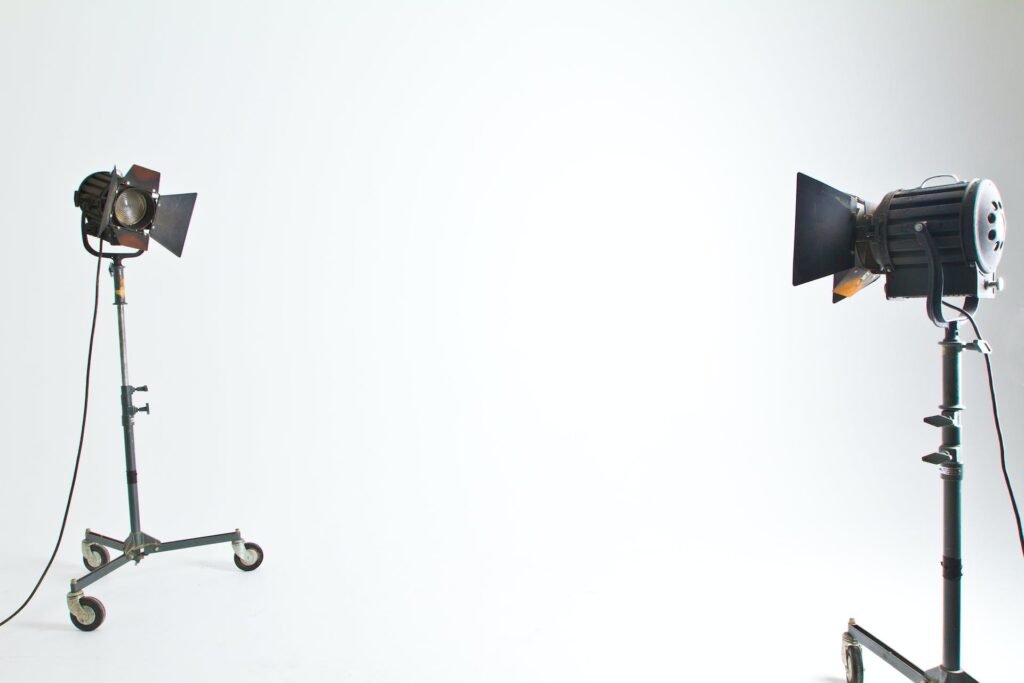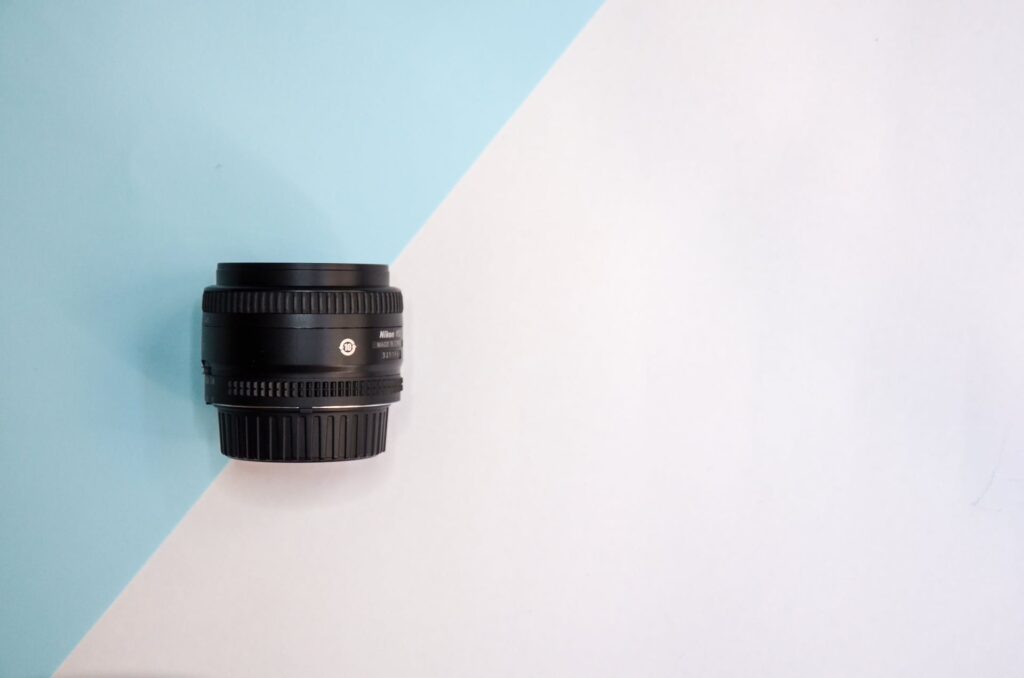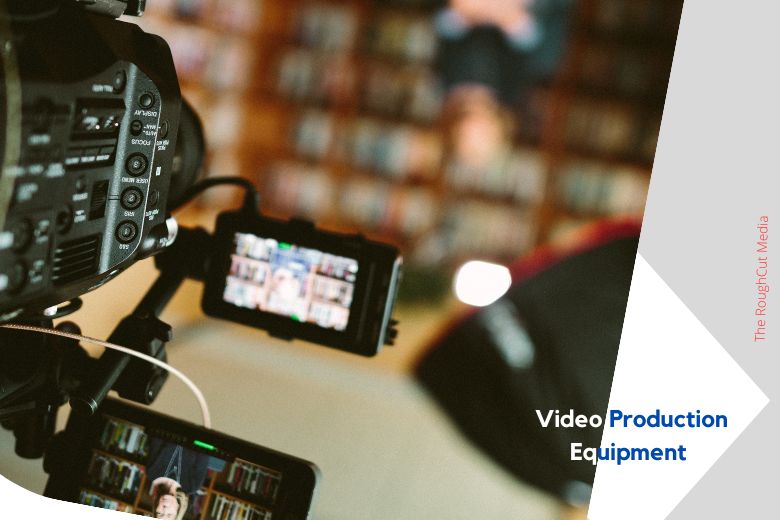A good understanding of the different variety of equipment at your fingertips is required before beginning on the journey of producing a professional video. Understanding the complexities of video production equipment is like unlocking the door to seamless and professional content creation for beginners. This in-depth understanding not only promotes smoother workflows in video concept development, but also improves the quality of your creations. In this post, we will discuss the critical importance of knowing how to use the various instruments that shape the videographer’s business.
Consider This: you’re on location, full of innovative ideas for your shoot. However, one important piece of equipment is missing: an audio recording setup. As a result, background noise marries the dialogue, leaving hours of intriguing footage nearly worthless. This real-world example highlights the consequences of ignoring the complex workings of video production equipment. A single missing tool can turn a potential masterpiece into a frustrating and compromised job. This underlines the importance of videographers knowing their equipment and having the correct tools for every stage of the production process.
List of Equipment Needed for Video Production
| Equipment | Usage | Expertise Required | Impact on Final Video | Issues Without Usage |
|---|---|---|---|---|
| Camera | Captures video footage | Beginner to Advanced | Determines video quality and resolution | Poor video quality, lack of visual appeal |
| Tripod | Stabilizes the camera | Beginner | Ensures steady shots and professional appearance | Shaky footage, unprofessional presentation |
| Microphone | Records clear audio | Beginner to Intermediate | Improves overall audio quality | Inaudible or poor-quality audio, distracting background noise |
| Lighting Equipment | Illuminates the scene | Beginner to Advanced | Enhances visibility and mood in the video | Poor visibility, unflattering or uneven lighting |
| Video Editing Software | Edits and assembles video clips | Intermediate to Advanced | Shapes the final narrative and visual style | Choppy edits, inconsistent storytelling |
| External Hard Drive | Stores and backs up video files | Beginner | Prevents data loss and ensures project continuity | Data loss, project delays due to file management issues |
| Green Screen | Enables background replacement | Intermediate | Adds versatility to video settings | Limited creative options, lack of visual diversity |
| Drone | Captures aerial footage | Intermediate | Provides unique and dynamic perspectives | Limited perspectives, less engaging visuals |
| Headphones | Monitors audio quality | Beginner | Ensures accurate assessment of audio during recording and editing | Misjudgment of audio quality, potential for sound issues |
| Camera Lenses | Alters focal length and perspective | Intermediate | Influences the visual style and composition | Limited creative options, inability to achieve desired look |
| Power Backup/Batteries | Provides uninterrupted power | Beginner | Prevents sudden shutdowns and loss of footage | Disruption in shooting, potential data loss |
| High-Quality Audio Cables | Ensures clear and reliable audio | Beginner | Minimizes interference and maintains audio quality | Audio distortion, compromised sound quality |
| Gimbal | Stabilizes camera for smooth movement | Intermediate | Enables fluid and cinematic camera movements | Shaky footage, difficulty in achieving smooth camera motion |
Let’s understand each Video Production Equipment in detail
Camera
The selection of the right camera is critical in advance video production since it has a major effect on the overall quality and visual attractiveness of the finished HD videos. Cameras of various different kinds serve to a variety of demands, from entry-level amateurs to seasoned pros, each with its own set of features and capabilities. DSLRs, mirrorless cameras, and professional camcorders are common examples. Understanding the differing characteristics of these alternatives is critical for selecting the best tool for the job.
For example: DSLRs are popular among novices and indie filmmakers due to their versatility and cost. Mirrorless cameras are popular among on-the-go videographers due to their compact size and superior functionality. Professional camcorders, developed for high-end productions, offer unrivaled image quality and durability.
Before beginning video production with any camera, it is critical to evaluate the following features:
- Sensor Size: Larger sensors capture more light, which results in higher image quality.
- Resolution: Higher resolution helps to clearer, more detailed footage.
- Frame Rate: Different frame rates have an effect on visual style, with higher rates allowing for seamless slow-motion filming.
- Bitrate and codec: These factors influence video compression and quality while editing.
- Low-Light Performance: Evaluate the camera’s performance in low-light circumstances.
- Autofocus system: A dependable autofocus mechanism is essential for maintaining tight focus when shooting.
- Audio Inputs: Just as important as the pictures is the audio; make sure the camera supports external microphones.
- Stabilization: Having built-in stabilization or compatibility with gimbals allows for more stable shots.
Here is a guide to help you buy the first video camera for video production.
Tripod
The tripod is a lesser-known hero in the field of video production, providing the steadiness and precision required to create professional, polished visuals. Choosing the correct tripod is critical since it has a big impact on the overall quality of the finished result. Stability is about providing a visually pleasing and immersive experience for the audience, not only avoiding shaky footage. The appropriate tripod enables videographers to achieve seamless pans, tilts, and tracking shots, increasing the video’s production value and narrative impact.
Types of Tripods in Video Production:
- Tripod with Fluid Head: Ideal for smooth and controlled movements, particularly during pan and tilt operations.
- Ball Head Tripod: Provides quick and flexible adjustments, making it ideal for fast-paced shooting conditions.
- Heavy-Duty Tripod: Designed to accommodate larger and heavier cameras while maintaining stability in difficult conditions.
Important Features for Choosing a Tripod in Video Production:
- Load Capacity: Make certain that the tripod can sustain the weight of your camera and accessories.
- Height Adjustment: For a variety of shooting perspectives, use a tripod with adjustable height.
- Leg Material: For portability without sacrificing stability, choose robust and lightweight materials.
- Fluid Damping System: This system is essential for smooth and controlled camera movements, particularly in video pans and tilts.
- Quick Release Plate: Allows for quick and easy camera attachment and separation.
- Consider the weight and collapsibility of the tripod for easy transportation on shoots.
- Build Quality: For long-term use in a variety of shooting settings, look for durability and weather resistance.
You can find more detailed information on Tripods.
Microphone
The appropriate microphone is more than simply a tool; it’s the audible heartbeat that gives visuals life. The significance of choosing the right microphone cannot be stressed, as it has a direct impact on the clarity, depth, and overall quality of audio in the finished video. A good microphone captures every detail of sound, ensuring that dialogue, ambient noise, and background audio all contribute to the storytelling process flawlessly.
Types of Microphones Used in Video Production:
- Lavalier Microphones (Lav Mics): Small and inconspicuous, these microphones are perfect for hands-free operation during interviews and presentations.
- Shotgun Microphones: These microphones are directional and highly focused, making them ideal for recording audio from a specific direction while minimizing surrounding noise.
- Handheld Microphones: Versatile and convenient for on-the-go recording, these microphones are often utilized in live reporting and interviews.
- USB Microphones: These are useful for solo content creators and voiceovers since they provide a direct digital connection to computers.
Refer this detailed guide on different types of Microphones
Important Features to Consider Before Using a Microphone in Video Production:
- Polar Pattern: It determines its sensitivity to sound from different directions.
- Frequency Response: Defines the frequency range that the microphone can accurately collect.
- Sensitivity: The efficiency with which the microphone translates sound into an electrical signal.
- Connectivity: Depending on your recording setup, consider whether the microphone connects via XLR, 3.5mm, or USB.
- Windscreen/Pop Filter: This is required to reduce wind noise and plosive sounds during recording.
Lighting Equipment

Lighting is an essential component of video production. Proper lighting not only illuminates subjects but also creates atmosphere, improves images, and ensures clarity. It’s a crucial component that can improve the overall quality of a video by attracting the audience’s attention and effectively conveying what is meant to be focused in video.
Types of Lighting Equipment:
- Key Light: The primary light source that highlights the main subject.
- Fill Light: Softens shadows created by the key light, providing balanced illumination.
- Backlight: Adds depth by illuminating the subject from behind, separating it from the background.
- Hair Light: Focuses on the subject’s hair, creating a halo effect and enhancing visual appeal.
Consider the following features:
- Color Temperature: Ensures that colors are rendered consistently.
- Dimmability: The ability to precisely alter the intensity of light.
- CRI (Color Rendering Index): Measures a light’s ability to accurately reproduce colors.
- Portability: Allows for greater versatility in a variety of shooting conditions.
- Diffusion Options: Allows you to change the quality of the light for softer, more pleasing results.
Video Editing Software
The appropriate video editing software is critical in video production because it acts as the digital canvas on which raw footage is transformed into a compelling videos. The software used not only defines editing capabilities, but it also has a considerable impact on the overall quality and style of the final project. High-quality video editing software enables creators to realize artistic goals by providing capabilities such as seamless clip transitions, color correction, and complex effects.
It improves post-production productivity by allowing for smoother workflows and more accurate editing control. From beginner-friendly programs like iMovie and Windows Movie Maker to intermediate solutions like Adobe Premiere Pro and Final Cut Pro X, various software options cater to different skill levels and project requirements. Advanced users frequently choose to professional suites such as DaVinci Resolve and Avid Media Composer, which provide a greater range of functionality for sophisticated editing, making the proper software selection an important decision in the video production process.
External Hard Drive
An External Hard Drive becomes as a critical asset in the field of video production, providing the safety and accessibility of crucial project data. Its importance lies in the effective storage, continuous backup, and prevention of future data loss. External Hard Drives allow you to organize and transfer huge video files while keeping project continuity and protecting against unforeseen technological issues.
Traditional HDDs for large storage and SSDs for rapid data access are two varieties that cater to different demands. Choosing the correct External Hard Drive matches with the project’s expectations, ensuring reliability and keeping the video production workflow’s originality.
Green Screen

In video production, the usage of a green screen, often known as chroma key. It is essential for allowing editing possibilities. Filmmakers can transport their subjects to a variety of imaginative places by replacing the green background with any desired image or video. This strategy improves storytelling by allowing for situations that would otherwise be impractical or expensive.
The green screen provides a varied canvas for cinematic expression, from alien landscapes to historical settings. It encourages the seamless integration of elements, resulting in a visually engaging and immersive experience for spectators.
Drone
Drones have become essential instruments in the industry of video production, practically taking narrative to new heights. Their high perspective adds a cinematic dimension, capturing beautiful views and dynamic shots that would be impossible to get otherwise. Drones offer adaptability, increasing production value in industries ranging from filmmaking to real estate. They provide a low-cost alternative for creating sweeping aerial vistas and engaging experiences for the audience.
In video production, two types of drones are used: consumer drones, which are appropriate for enthusiasts and small-scale projects, and professional drones, which are outfitted with advanced features such as higher-quality cameras and longer flight lengths to meet the needs of larger productions.
Read more about Consumer Drones Vs Professional Drones.
Headphones
The proper headphones are essential in video production for precise audio quality monitoring. The appropriate headphones ensure that each detail is caught when recording and editing by providing an accurate depiction of sound.
Closed-back headphones for sound isolation, open-back headphones for a natural sound staging, and in-ear monitors for on-the-go convenience are common types. Using the right headphones improves audio precision, resulting in a professional and polished final video.
Closed-back Vs open-back headphones for video production
Camera Lenses

Different lenses serve different functions, allowing filmmakers to generate unique effects and capture various views. Prime lenses are popular because of their fixed focal lengths, zoom lenses for adaptability, and wide-angle lenses for wide-angle images. It is critical not only to choose the proper type, but also to understand the key aspects before using it.
Take into account factors such as focal length, aperture, image stabilization, and lens mount compatibility.
- The focal length of a lens controls its zoom capabilities,
- Whereas a larger aperture improves low-light performance.
- Image stabilization decreases tremors, which is essential for handheld photography.
- Compatibility with the mount on your camera ensures smooth connection.
Using the correct camera lenses allows videographers to tell visually appealing stories with precision and impact, opening up a world of creative possibilities in the field of video production.
Power Backup / Batteries
Sudden power interruptions can result in data loss and disrupt the entire shooting process. Using robust power backup solutions, such as rechargeable batteries or uninterruptible power supplies (UPS), ensures continuous operation, preventing potential setbacks. These power sources offer a safeguard against unforeseen outages, allowing videographers to focus on capturing moments without the fear of losing critical footage.
High-Quality Audio Cables
High-Quality Audio Cables are essential in video production to provide perfect sound quality. These cables reduce interference while delivering clear and stable audio, which is essential for a professional final result. They contribute to a more seamless recording and editing procedure by reducing signal deterioration. Whether you’re recording dialogue, ambient sounds, or music, investing in high-quality audio cables improves the whole auditory experience, dramatically raising the production value of your videos.
Gimbal
Gimbals play an important role in improving video production quality by delivering outstanding stability and control. Their significance comes from their capacity to reduce shaky film, resulting in a professional and polished appearance. Gimbals provide smooth pans, tilts, and dynamic tracking shots by stabilizing the camera, boosting the overall visual appeal of the film.
Moreover, gimbals provide more than just stability; they also allow filmmakers to fluid and cinematic camera motions. Gimbals are used in video production in a variety of ways, including handheld, wearable, and drone-mounted gimbals. Each kind is tailored to various shooting conditions, providing adaptability and flexibility for a wide range of creative needs.
Get Started With Our
Video Production Agency in Pune
